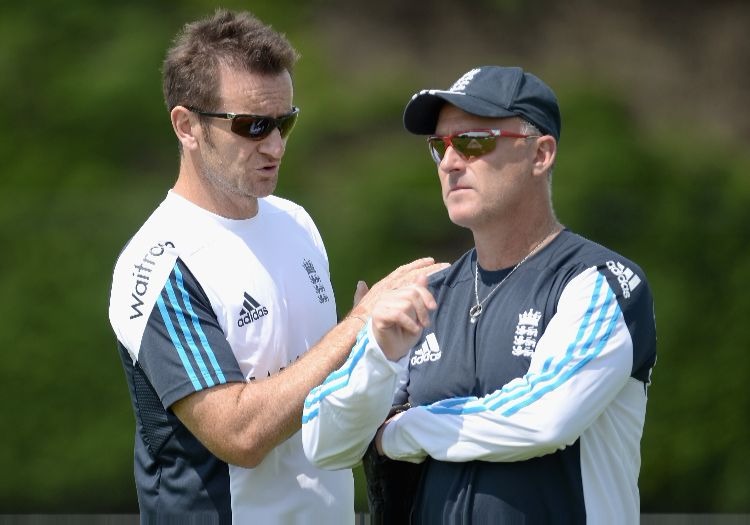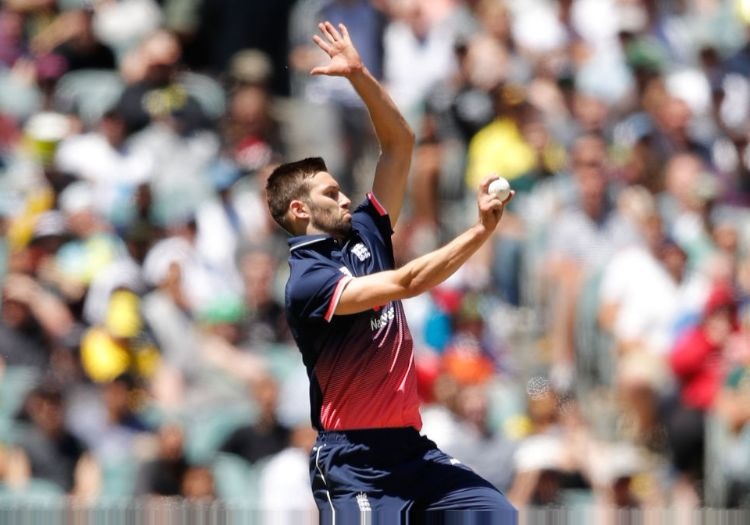The Ashes has been swiftly surrendered, and England’s lead fast-bowling coach has seen his methods questioned, the ECB Performance Centre labelled ‘Bluffborough’ by critics, and county cricket come under attack

Kevin Shine says England have fast bowlers
With England’s batsmen being peppered by Australia’s fiery pace trio and the tourists’ bowlers struggling for a speed riposte, Kevin Shine has been tempted to reach for his helmet. The Ashes has been swiftly surrendered, and England’s lead fast-bowling coach has seen his methods questioned, the ECB Performance Centre labelled ‘Bluffborough’ by critics, and county cricket come under attack.
Last winter it was the quality of English spin, and the ability of our batsmen to play it; this winter the cycle of criticism has switched to pace – it is ever thus when England are not winning overseas.
Shine, 48, bowled quick for Hampshire, Middlesex and Somerset. He then coached Somerset, and took up his current job in 2006. He is aware of the notion that the ECB has an agenda to sacrifice speed on the altar of career longevity.
“It’s been very frustrating, although I expect an Ashes tour to be brutal if England do not win,” he told The Cricketer.
“I’ve read the criticism. In the past we have shown journalists what we’re doing a number of times, but for whatever reason, the message hasn’t been getting through.
“We have a long-term strategy and I am absolutely sure that what we are doing is right. The headline is ‘individuality’. We know what the quickest bowlers look like and are committed to helping every player achieve their potential. We have three aims: 1) keep bowlers healthy – if they can’t remain fit then they cannot practise and play to improve their performances; 2) get them bowling as skilfully as possible and 3) bowling as fast as possible. It is the whole package.
“We have an excellent system, and county cricket is a part of it. I played and coached county cricket, it is a proven system which produces world-class bowlers. Stuart Broad and Jimmy Anderson are proof of this and we have many talented bowlers coming through. I feel it is unfair to criticise county cricket – everyone is constantly looking to improve.
"I watch a lot of county cricket and the standard is high. It is about achieving balance: a bowler can run in and try to bowl as fast as he can every ball, but for 20 overs a day, four or five days a week, that is going to be difficult.

The lead fast bowling coach has defended his programme
“I saw the speeds from Adelaide, and Broad, Anderson and Chris Woakes all touched 90mph at times. Australia have three potent fast bowlers who have managed to remain fit and bowled well, but we too have bowlers capable of bowling in excess of 90mph and we encourage them to bowl with pace, accuracy and craft.”
What about this notion that preventing injuries is so important that sometimes pace has to be jettisoned?
“I utterly refute that. In terms of injury prevention, we used to talk about avoiding ‘counter-rotation’ actions. PhD research undertaken by Dr Craig Ranson suggested that most lower-back stress fractures were not caused by counter rotation, or to use the old terminology a ‘mixed action’, but actually from having excessive side bend at the time the front foot makes contact with the ground.
"The forces travelling through the body at this point can be up to 10 times a bowler’s body weight. We monitor workloads, not to keep the amount of bowling down but to keep it as constant as possible - we try to avoid workload spikes, up or down, as these are the cause of many injuries.
“We try to put in place simple coaching methods. The best young fast bowlers are screened at Loughborough as soon as they are scouted and we make sure we do not reduce their skills or pace.
“The times we would encourage coaching interventions would be when we felt they had an action which may cause them harm; when we could help them improve their craft (swing, seam and variations); and if we felt the changes could improve pace significantly. It is all about what is best for the individual.
“We now have the ability to model a bowler, this model can predict what they are capable of bowling. In essence, we can find out what they are capable of before we attempt to physically coach them.
"This process is in its infancy but it is very exciting and has shown that each bowler can make improvements. There is no ‘one-size-fits-all’ approach. It involves sophisticated 3D analysis – measuring the strength they have in every joint – and through this model we can optimise pace and skills for each individual. We hope that this process will take the guesswork out of coaching but also act as motivation for players to want to improve.”

Stuart Meaker has been backed by Shine for an England return
Dean Headley has said there is too much focus on producing tall, upright bowlers rather than just finding the fastest.
“We don’t look for one-size bowlers, I would actively look for different bowlers to give a team balance and variety,” says Shine.
“Yes we encourage bowlers to be as upright as possible, as this may give them more bounce and consistency. It is not all about pace, though. The best batters in the world can play 90mph bowling if it’s dead straight, the bowler needs to develop their skill, craft and tactical awareness.
“Mark Wood is not tall. He dismisses the best batsmen, using pace, craft and skill – an example is how he uses the crease to create different angles. Mark has been desperately unlucky with his ankle issues. The rest of his body is incredibly strong, he just needs an injury-free run.
“Stuart Meaker can bowl very fast and I hope we’ll see him in an England shirt again. Every time he has come to Loughborough he’s bowled fast, this included a personal best of 89.7 (probably equivalent to 94 mph on TV). I’m sure that he’ll push for an England place again.
“Liam Plunkett can also bowl at more than 90mph; we’ve seen this with his impressive white-ball form – I see no reason why he cannot do the same with the red ball too.
“Tom Helm is another exciting young bowler– his pace has improved, working with the excellent Richard Johnson at Middlesex, in close collaboration with the ECB. Jake Ball and Steve Finn can hit 90mph too. We have the bowlers but it takes immense work – it doesn’t happen overnight.
"Jamie Overton (Somerset), and left-armers George Garton (Sussex), Olly Stone (Warwickshire) and Tom Barber (Middlesex) are all young bowlers who are capable of bowling at 90 mph and there are other young bowlers who will be capable of this in the future. We will look to maintain this speed but also develop their physical and mental robustness, craft and skills.

Mark Wood is one of those in the England ranks capable of real pace
“In terms of pace, I think a bowler is at his peak between the ages of 22–26 years old, but they can still enjoy a full Test and ODI career to 30 and beyond. There will be an inevitable drop in pace due to wear and tear overall, but they will still be able to bowl quick balls - the key is they will have learnt their craft and be more effective in all conditions.”
I also mention John Lever’s criticism that there should be a left-arm quick
out there.
“Unfortunately Reece Topley has been injured, but we have plenty of good ones coming through: Barber, who is fast and exciting, Paul Walter of Essex, Garton, Luke Wood (Nottinghamshire) and Matt Taylor (Gloucestershire). Ryan Sidebottom will hopefully be coming to visit the pace programme to share his experience.
“Ten years ago I proposed an academy for fast bowlers. I conducted research, and received help to develop the idea from Simon Timson, then head of science and medicine, who has worked for Skeleton, the ECB, UK Sport and the LTA. I suggested a fast-bowling hothouse with bowlers joining at 16.
"They would be based at Loughborough, study their A-Levels there, alongside their cricket development, receiving the best input from elite coaches and the science and medicine team. Unfortunately, it wasn’t feasible at the time, so we started the Pace Programme. This begins later on during the development cycle and constantly evolves as our understanding deepens and our knowledge improves."
Perhaps it is time to look at Shine’s idea again.